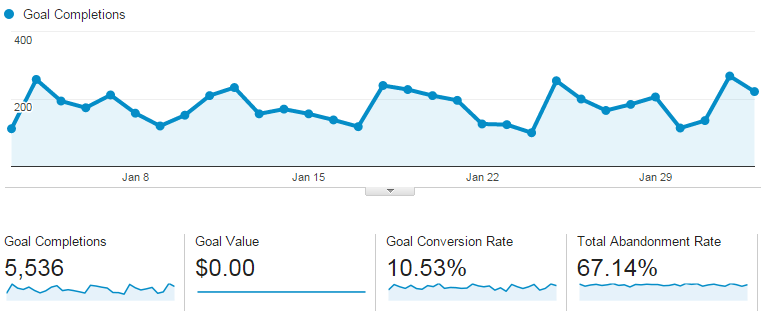What Data Is Google Analytics Goals Unable to Track: Important Information
What Data Is Google Analytics Goals Unable to Track: Important Information
Blog Article
Discover the Limitations of Google Analytics Goals: Introducing the Data Kind That Remain Untrackable
As organizations progressively count on data-driven decision-making, recognizing the restrictions of tools like Google Analytics ends up being critical. While Google Analytics Goals deal valuable insights right into user communications, there exist information kinds that thwart monitoring, presenting challenges to a comprehensive understanding of individual behavior. These untrackable information kinds elevate concerns regarding the accuracy and efficiency of the analytics data that companies greatly count upon for their electronic strategies. Interested to reveal the surprise unseen areas in your data analysis process?
Incomplete Individual Journey Tracking
Incomplete customer journey monitoring within Google Analytics can impede the capability to properly evaluate individual behavior. When the customer journey is not completely tracked, there are spaces in the information that stop a detailed understanding of how individuals interact with a web site. This lack of insight can lead to missed possibilities for optimization and renovations to the user experience.
One usual concern with insufficient customer trip tracking is the lack of ability to see the complete path that individuals take previously finishing a goal or leaving the website. Without this details, it is testing to determine where customers might be encountering challenges or rubbing factors that prevent them from converting. Furthermore, incomplete tracking can obscure the effect of particular advertising and marketing efforts or web site adjustments on individual habits.
To address this restriction, it is essential to establish proper tracking mechanisms within Google Analytics to capture the whole customer journey. This might involve establishing occasion monitoring, objective funnels, or making use of tools like Google Tag Supervisor to make sure that no important communications go unrecorded. By getting an extensive view of the user journey, web site owners can make more enlightened decisions to improve individual engagement and drive conversions.
Acknowledgment Obstacles
Navigating with acknowledgment difficulties in Google Analytics needs a comprehensive understanding of exactly how different touchpoints contribute to the general conversion procedure. Attribution challenges occur from the intricacy of modern-day client trips, where customers connect with numerous networks before converting. Google Analytics offers different attribution versions like initial touch, last touch, and direct, each supplying a different viewpoint on how credit scores is designated to touchpoints along the conversion course. Nonetheless, these versions might not always precisely mirror real effect of each touchpoint on the conversion.
One usual attribution challenge is the trouble in associating conversions to the correct resource, particularly in instances where customers interact with multiple channels before transforming. This can lead to errors in figuring out which advertising initiatives are driving one of the most conversions. Furthermore, cross-device monitoring poses another acknowledgment obstacle, as users commonly switch over between gadgets throughout their trip, making it challenging to track their communications flawlessly. Marketers must thoroughly interpret and examine attribution data to make enlightened decisions and enhance their advertising and marketing strategies effectively.
Offline Conversions
Offered the challenges connected with attributing conversions properly in online networks, the measurement of offline conversions offers a substantial opportunity for online marketers seeking a more comprehensive understanding of their customers' trip. Offline conversions describe activities that clients take in the physical globe, such as making purchases in brick-and-mortar stores or over the phone, going to events, or involving view it with printed materials - what data is google analytics goals unable to track. These conversions are essential for companies that run both online and offline, as they offer useful insights right into the efficiency of marketing campaigns throughout numerous touchpoints
Tracking offline conversions generally positioned a substantial challenge for marketing professionals, as it was testing to link these activities back to details on the internet interactions accurately. Nevertheless, with advancements in modern technology, such as the assimilation of CRM systems, one-of-a-kind identifiers, and voucher codes, services can now link the gap between online and offline data to obtain an extra holistic sight of customer actions. By successfully measuring offline conversions, marketing experts can enhance their methods, allocate sources a lot more effectively, and inevitably boost the overall client experience.
Cross-Device Tracking
Cross-device monitoring plays a vital duty in understanding the interconnected nature of consumers' digital interactions throughout numerous tools. In today's omnichannel world, where users perfectly change between smart devices, tablets, and desktop computers, tracking their behavior throughout these tools is crucial for marketers to get an extensive view of their client trip.

Furthermore, personal privacy worries and policies such as GDPR and CCPA have additionally complicated cross-device monitoring. With individuals demanding even more control over their information and raised limitations on tracking modern technologies, marketing experts need to find privacy-compliant and innovative ways to attach user interactions throughout gadgets.
Dynamic Content Involvement
Understanding user involvement with dynamic web dig this content is essential in optimizing digital advertising and marketing methods for boosted audience interaction. Dynamic material refers to internet site elements that change based upon user actions, choices, or various other aspects, supplying a personalized experience. Nonetheless, tracking individual interactions with vibrant content positions challenges for conventional analytics devices like Google Analytics.
While Google Analytics can track standard communications like clicks and web page sights, it may battle to capture even more nuanced involvements within vibrant web content. what data is google analytics goals unable to track. Metrics such as time invested in specific vibrant elements, hover activities, or communications within pop-ups are usually not conveniently quantifiable using typical monitoring techniques. This limitation prevents marketing experts' capability to completely comprehend exactly how users are involving with vibrant material and customize their methods as necessary

Verdict
In conclusion, Google Analytics objectives have limitations in tracking insufficient customer journeys, attributing conversions properly, catching offline conversions, tracking cross-device communications, and measuring vibrant web content interaction. These constraints highlight the significance of checking out extra monitoring techniques and tools to get a much more detailed understanding of customer actions and conversions beyond what Google Analytics can offer.
While Google Analytics Goals offer important insights into user communications, there exist information kinds that avoid monitoring, posturing difficulties to a detailed understanding of individual habits.Insufficient individual journey monitoring within Google Analytics can prevent the capacity to precisely examine user behavior. When the customer journey is not totally tracked, there are gaps in the information that protect against a comprehensive understanding of exactly how individuals engage with a site.One common concern with insufficient customer journey tracking is the failure to see the complete course that customers take previously completing a goal or leaving the website. By acquiring a comprehensive sight of the customer trip, web site proprietors can make even more enlightened decisions to improve customer involvement and drive conversions.
Report this page